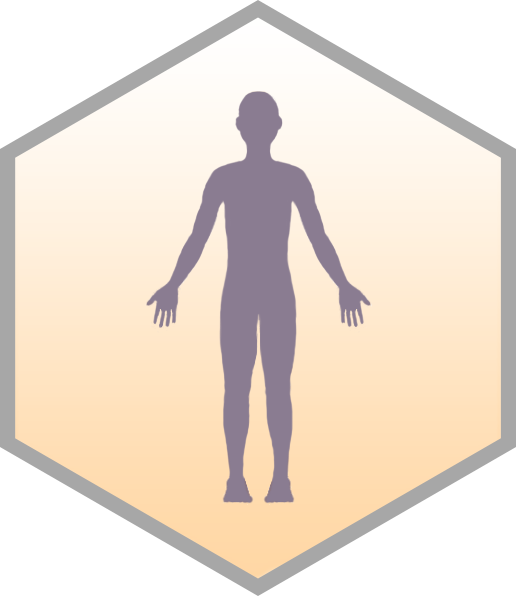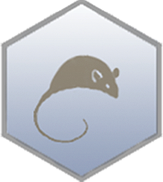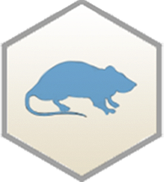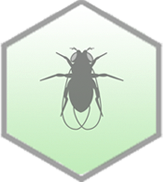RAD5 / YLR032W Overview
- Standard Name
- RAD5 1
- Systematic Name
- YLR032W
- SGD ID
- SGD:S000004022
- Aliases
- REV2 11 , SNM2 12
- Feature Type
- ORF , Verified
- Description
- DNA helicase/Ubiquitin ligase; involved in error-free DNA damage tolerance (DDT), replication fork regression during postreplication repair by template switching, and error-prone translesion synthesis; required for UV and MMS-associated unequal sister chromatid exchange (SCE) but not for double-strand break associated unequal SCE; promotes synthesis of free and PCNA-bound polyubiquitin chains by Ubc13p-Mms2p; human homolog HLTF can complement yeast null mutant 2 3 4 5 6 7 8 9 10
- Name Description
- RADiation sensitive 1
- Comparative Info
-





Sequence
The S. cerevisiae Reference Genome sequence is derived from laboratory strain S288C. Download DNA or protein sequence, view genomic context and coordinates. Click "Sequence Details" to view all sequence information for this locus, including that for other strains.
- Summary
- RAD5/YLR032W is located on the right arm of chromosome XII near the centromere between uncharacterized gene YLR031W and RSC58 chromatin remodeling complex subunit; coding sequence is 3510 nucleotides long with 39 SNPs, 16 of which cause amino acid polymorphisms, and a 3-nucleotide in-frame deletion that removes residue D44 in CEN.PK, SK1, and Y55
Analyze Sequence
S288C only
BLASTN | BLASTP | Design Primers | Restriction Fragment Map | Restriction Fragment Sizes | Six-Frame Translation
S288C vs. other species
BLASTN vs. fungi | BLASTP at NCBI | BLASTP vs. fungi
S288C vs. other strains
Protein
Basic sequence-derived (length, molecular weight, isoelectric point) and experimentally-determined (median abundance, median absolute deviation) protein information. Click "Protein Details" for further information about the protein such as half-life, abundance, domains, domains shared with other proteins, protein sequence retrieval for various strains, physico-chemical properties, protein modification sites, and external identifiers for the protein.
- Summary
- Rad5p is 1169 amino acids long, short-lived, low in abundance; sumoylated on 3 lysines, phosphorylated on 18 residues
- Length (a.a.)
- 1169
- Mol. Weight (Da)
- 133989.7
- Isoelectric Point
- 6.28
- Median Abundance (molecules/cell)
- 1520 +/- 242
- Half-life (hr)
- 6.2
Alleles
Curated mutant alleles for the specified gene, listed alphabetically. Click on the allele name to open the allele page. Click "SGD search" to view all alleles in search results.
View all RAD5 alleles in SGD search
Gene Ontology
GO Annotations consist of four mandatory components: a gene product, a term from one of the three Gene Ontology (GO) controlled vocabularies (Molecular Function, Biological Process, and Cellular Component), a reference, and an evidence code. SGD has manually curated and high-throughput GO Annotations, both derived from the literature, as well as computational, or predicted, annotations. Click "Gene Ontology Details" to view all GO information and evidence for this locus as well as biological processes it shares with other genes.
- Summary
- DNA-dependent ATPase and DNA helicase that binds to Holliday junctions and forked DNA; involved in protein polyubiquitination and free ubiquitin chain polymerization; additional roles in postreplication DNA repair, double-strand break repair, and error-prone translesion synthesis; localizes to the nuclear chromatin and associates with telomeres
View computational annotations
Molecular Function
- Manually Curated
- enables ATP-dependent activity, acting on DNA (IDA)
- enables four-way junction DNA binding (IDA)
- enables four-way junction helicase activity (IDA)
- enables Y-form DNA binding (IDA)
- enables zinc ion binding (RCA)
Biological Process
- Manually Curated
- involved in DNA damage tolerance (IDA)
- involved in double-strand break repair (IMP, IGI)
- involved in error-free postreplication DNA repair (IMP)
- involved in error-free translesion synthesis (IDA, IMP)
- involved in error-prone translesion synthesis (IMP, IDA)
- involved in free ubiquitin chain polymerization (IDA)
- involved in protein polyubiquitination (IDA)
Phenotype
Phenotype annotations for a gene are curated single mutant phenotypes that require an observable (e.g., "cell shape"), a qualifier (e.g., "abnormal"), a mutant type (e.g., null), strain background, and a reference. In addition, annotations are classified as classical genetics or high-throughput (e.g., large scale survey, systematic mutation set). Whenever possible, allele information and additional details are provided. Click "Phenotype Details" to view all phenotype annotations and evidence for this locus as well as phenotypes it shares with other genes.
- Summary
- Non-essential gene in reference strain S288C; null mutant displays sensitivity to DNA-damaging agents, including MMS, HU, UV light, and X-rays; null mutant has increased chromosomal rearrangement and instability; in large-scale studies, null mutant displays decreased competitive fitness and oxidative stress resistance, and altered sensitivity to various chemicals
Classical Genetics
- null
- reduction of function
- unspecified
- overexpression
- null
- cell size: increased
- chemical compound accumulation: abnormal
- competitive fitness: decreased
- gamma ray resistance: decreased
- haploproficient
- heat sensitivity: increased
- metal resistance: decreased
- mutation frequency: increased
- nuclear morphology: abnormal
- oxidative stress resistance: decreased
- protein activity: increased
- protein/peptide accumulation: increased
- replicative lifespan: decreased
- resistance to chemicals: decreased
- resistance to chemicals: increased
- starvation resistance: decreased
- stress resistance: decreased
- telomere length: increased
- UV resistance: decreased
- viable
- X ray resistance: decreased
- overexpression
Large-scale Survey
Disease
Disease Annotations consist of three mandatory components: a gene product, a term from the Disease Ontology (DO) controlled vocabulary and an evidence code. SGD provides manually curated DO Annotations derived from the literature. Click "Disease Details" to view all Disease information and evidence for this locus as well as diseases it shares with other genes.
- Summary
- Yeast RAD5 is homologous to human HLTF, and has been used to study mutations found in patients with gastrointestinal system cancer
Manually Curated
Interaction
Interaction annotations are curated by BioGRID and include physical or genetic interactions observed between at least two genes. An interaction annotation is composed of the interaction type, name of the interactor, assay type (e.g., Two-Hybrid), annotation type (e.g., manual or high-throughput), and a reference, as well as other experimental details. Click "Interaction Details" to view all interaction annotations and evidence for this locus, including an interaction visualization.
- Summary
- Rad5p interacts physically with proteins involved in DNA repair; RAD5 interacts genetically with genes involved in DNA repair
815 total interactions for 372 unique genes
Physical Interactions
- Affinity Capture-MS: 9
- Affinity Capture-RNA: 6
- Affinity Capture-Western: 8
- Biochemical Activity: 5
- Co-crystal Structure: 1
- Co-purification: 2
- PCA: 1
- Reconstituted Complex: 6
- Two-hybrid: 40
Genetic Interactions
- Dosage Growth Defect: 1
- Dosage Lethality: 122
- Dosage Rescue: 6
- Negative Genetic: 265
- Phenotypic Enhancement: 40
- Phenotypic Suppression: 20
- Positive Genetic: 42
- Synthetic Growth Defect: 179
- Synthetic Lethality: 9
- Synthetic Rescue: 53
Regulation
The number of putative Regulators (genes that regulate it) and Targets (genes it regulates) for the given locus, based on experimental evidence. This evidence includes data generated through high-throughput techniques. Click "Regulation Details" to view all regulation annotations, shared GO enrichment among regulation Targets, and a regulator/target diagram for the locus.
- Summary
- RAD5 promoter is bound by Xbp1p in response to heat; RAD5 transcription is upregulated by Znf1p during xylose fermentation
Expression
Expression data are derived from records contained in the Gene Expression Omnibus (GEO), and are first log2 transformed and normalized. Referenced datasets may contain one or more condition(s), and as a result there may be a greater number of conditions than datasets represented in a single clickable histogram bar. The histogram division at 0.0 separates the down-regulated (green) conditions and datasets from those that are up-regulated (red). Click "Expression Details" to view all expression annotations and details for this locus, including a visualization of genes that share a similar expression pattern.
Summary Paragraph
A summary of the locus, written by SGD Biocurators following a thorough review of the literature. Links to gene names and curated GO terms are included within the Summary Paragraphs.
Last Updated: 2024-07-03
Literature
All manually curated literature for the specified gene, organized into topics according to their relevance to the gene (Primary Literature, Additional Literature, or Review). Click "Literature Details" to view all literature information for this locus, including shared literature between genes.